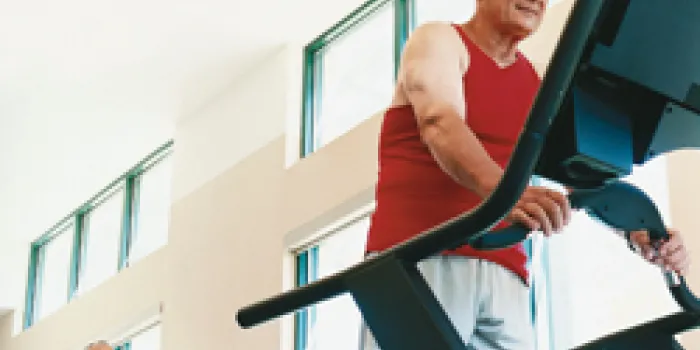Earlier this year, Wayne Cone joined a gym in his hometown of Jacksonville, Florida. Cone, who has severe hemophilia A, wanted to lose weight, get in shape and start taking better care of his joints. At 50, he’s had two knee replacements and has a bad ankle. Going to the gym has made a difference.
Cone spends about an hour at the gym at least three times a week. His persistence has paid off—he’s lost about 20 pounds so far and feels better. “It really helps with being able to do the day-to-day things with less pain and stress.” Cone, who works in the mortgage industry, divides his gym time between building strength with resistance bands and getting a cardio workout on a stationary bike.
Knowing what you want out of a gym is an essential first step in picking the right one for you, says physical therapist Debra Voss, PT, ATC, CSCS, of the Hemophilia Center of Western Pennsylvania in Pittsburgh.
Your physical therapist or other healthcare provider can help you review your goals and develop an appropriate exercise plan based on your individual joint and muscle limitations. “Whether those goals include general wellness, weight loss or building strength, you should first decide what you are willing to commit to,” says Voss.
Once you define your goals, it’s time to start shopping around. For people with advanced joint problems, Voss advises finding a gym with a pool. “Pools offer a comfortable and gentle environment,” she says. Exercising in a pool relieves pressure on the joints and works well for most people.
A good gym will have a wide range of weights and cardio equipment to help you build muscle and burn fat. But before you get started, you need to get schooled on how to use that equipment properly.
Most gyms have personal trainers on staff. Voss recommends checking out their credentials before you join. Ideally, they should be certified by either the National Strength and Conditioning Association or the American College of Sports Medicine.
Even if the gym you choose has stellar personal trainers, talk to your physical therapist about exercising safely. “You should be evaluated prior to deciding what to do in the gym, especially if you have a lot of joint issues,” says physical therapist Anita Davie, PT, of the Tulane Hemophilia Treatment Center in New Orleans.
A personal trainer should show you how to properly and safely use the weight machines, treadmills and other equipment in the gym, while also offering advice and encouragement. That’s what April Fiore-Wohrman, 46, who has type 1 von Willebrand disease (VWD), found when she joined a gym in Mission Viejo, California. She is retired from the publishing industry. She hits the gym to lift weights and work on the elliptical trainer five days a week. “When I first joined the gym, I had no idea how to do anything. My personal trainer would always give me goals on what I should be able to do and what I should be working up to.”
Gym Alternatives
Local community centers or other nonprofit fitness centers like the YMCA can provide a wider range of options. “Community centers often offer a more holistic approach to getting in shape,” Davie says. “They frequently have a nutritionist on staff, as well as classes on healthy eating.” Eating well will complement your exercise regimen and help you improve your overall health. Other classes may focus on stress management, diabetes prevention and smoking cessation.
Taking a class will add a social aspect to your routine. “Community centers are usually more family-oriented and offer more social support,” Voss says. “This is life-changing behavior. You are more likely to have success if you have a family member or friend on board.”
From 2008–09, NHF partnered with the YMCA and the Centers for Disease Control and Prevention
to provide grants to six chapters, allowing them to offer free gym memberships to chapter members and their families.
The Hemophilia Foundation of Minnesota/Dakotas has witnessed a continued benefit from the program. “Our YMCA program has ended, but those who participated really enjoyed the experience,” says James Paist, executive director of the chapter. “Some of the individuals and families who participated in our program are still going to the YMCA on their own.”
Subsidizing Fitness
There is a growing trend for health insurance companies to reimburse their policyholders for a portion of the cost of a gym membership. One United Healthcare policy, for example, covers up to $300 every six months for policyholders who go to the gym at least twice a week. Check your own policy to see what it covers.
Your employer might also help share the cost of joining a gym. An increasing number of companies offer wellness programs to improve their employees’ health. Ask your supervisor or human resources department about these programs.
Whatever gets you to the gym, remember that it may take time before it becomes a habit. “It took me about a month or two to feel at home there, but I kept going,” says Fiore-Wohrman. “I’ve been working out now for three years. I’m 60 pounds lighter and have lowered my blood pressure and cholesterol.”

